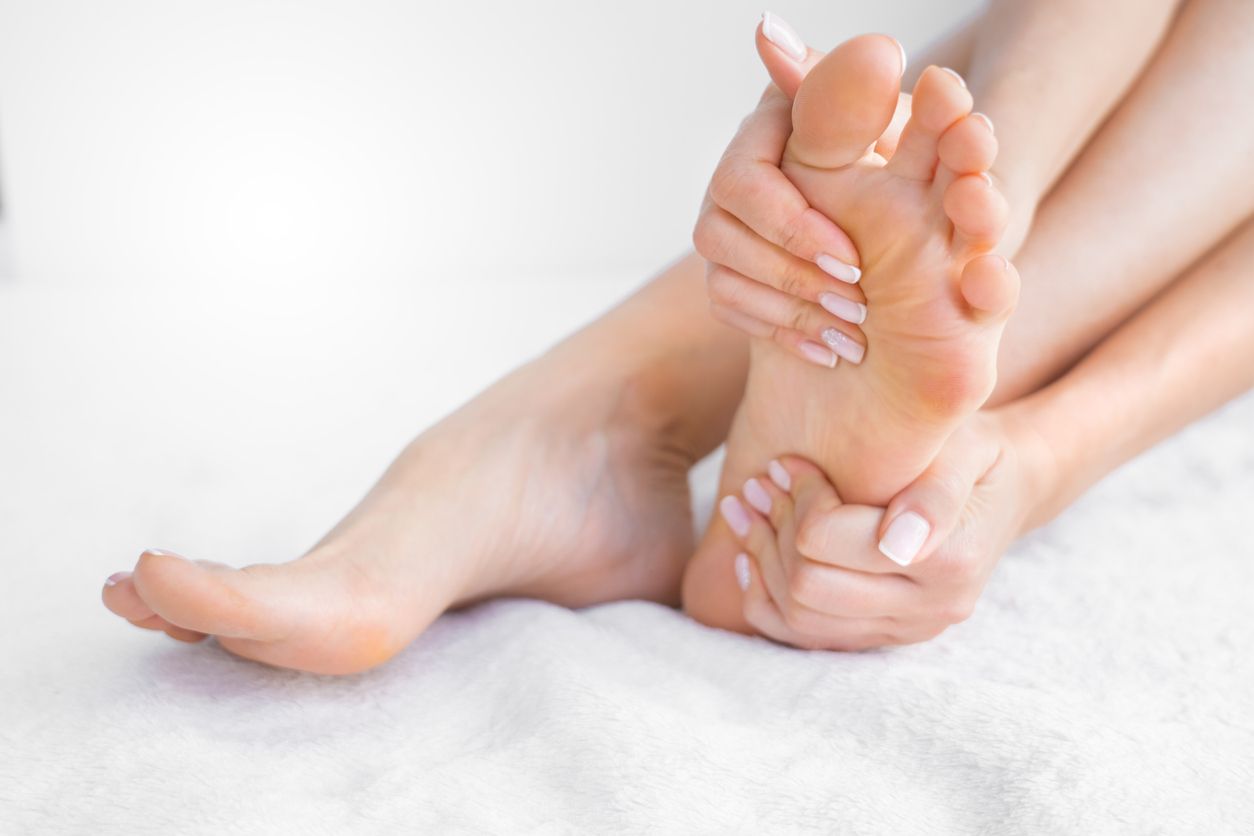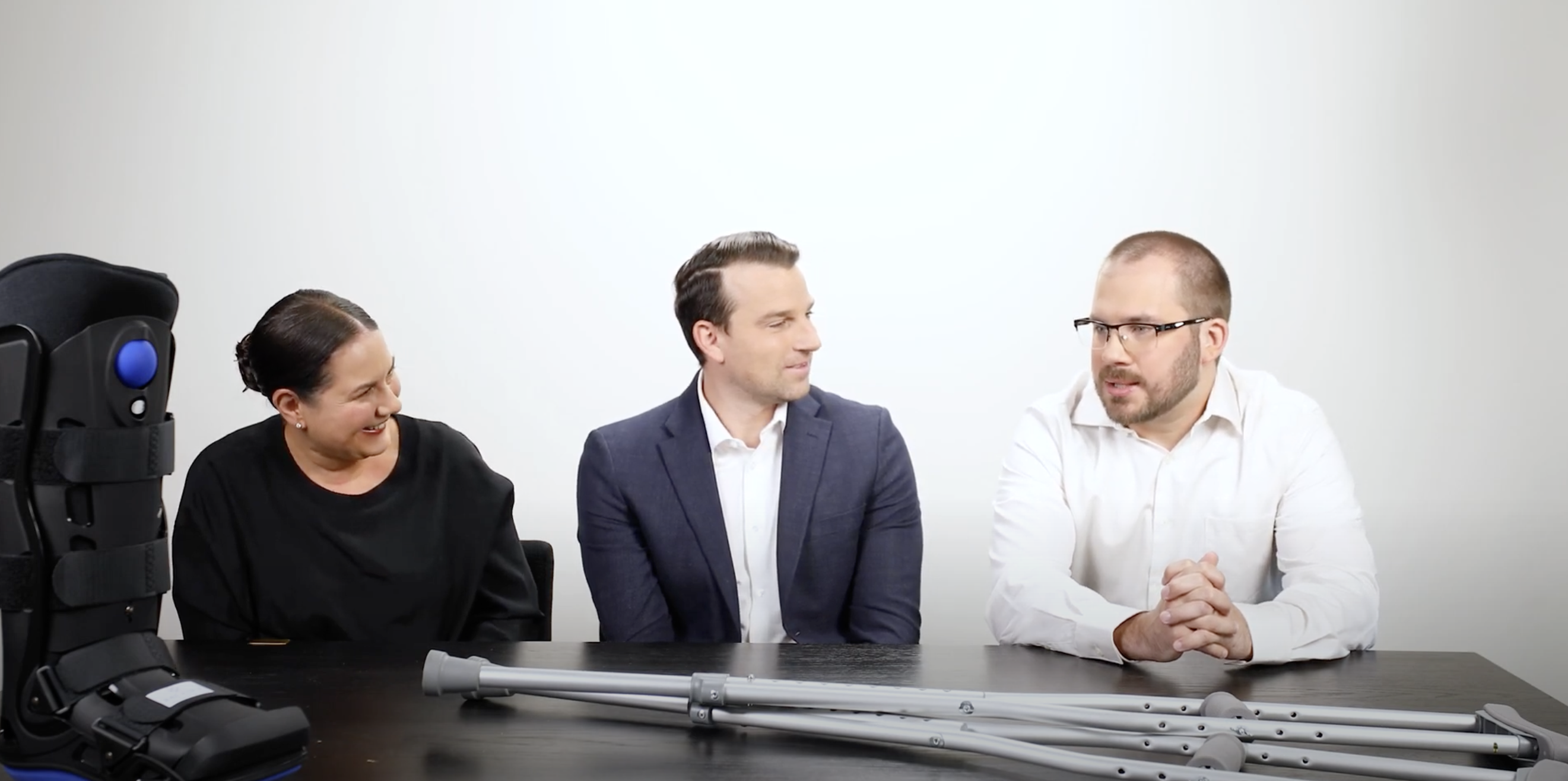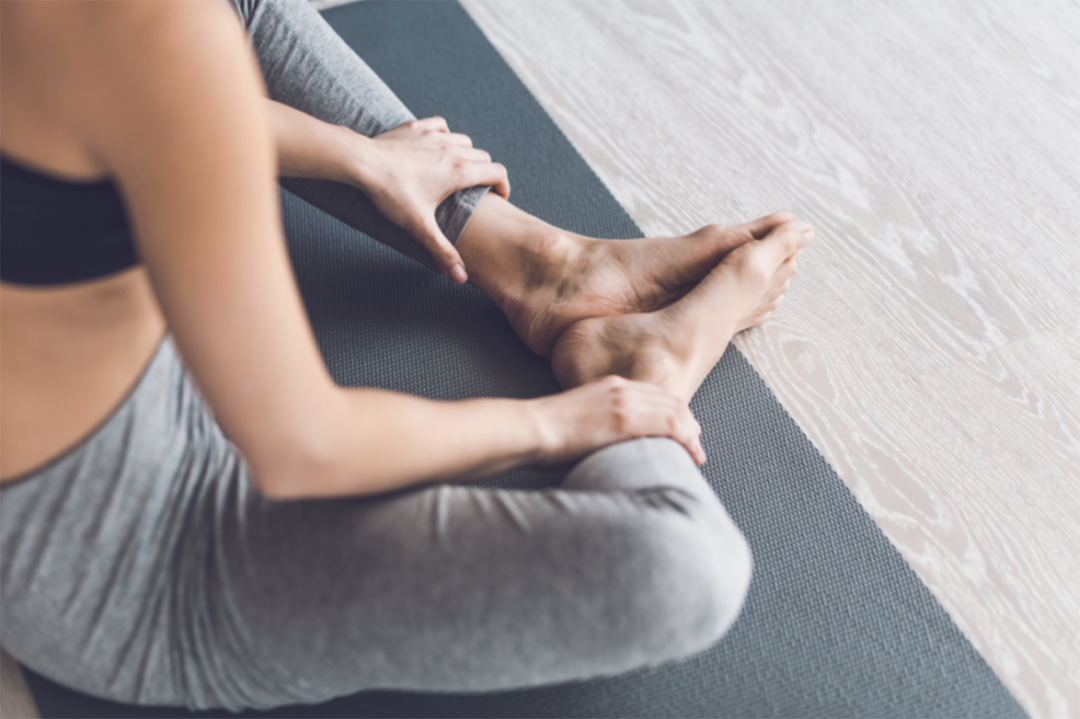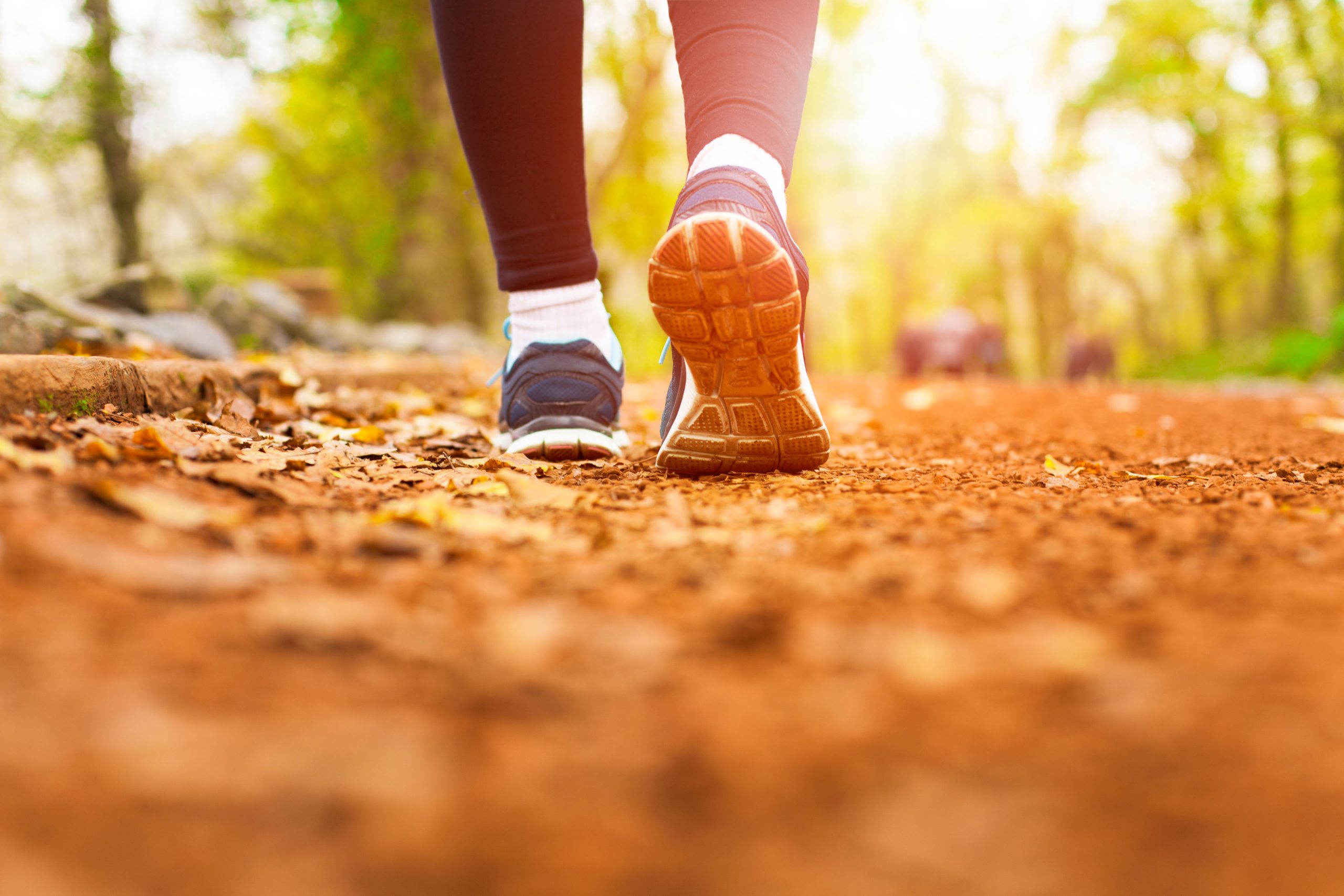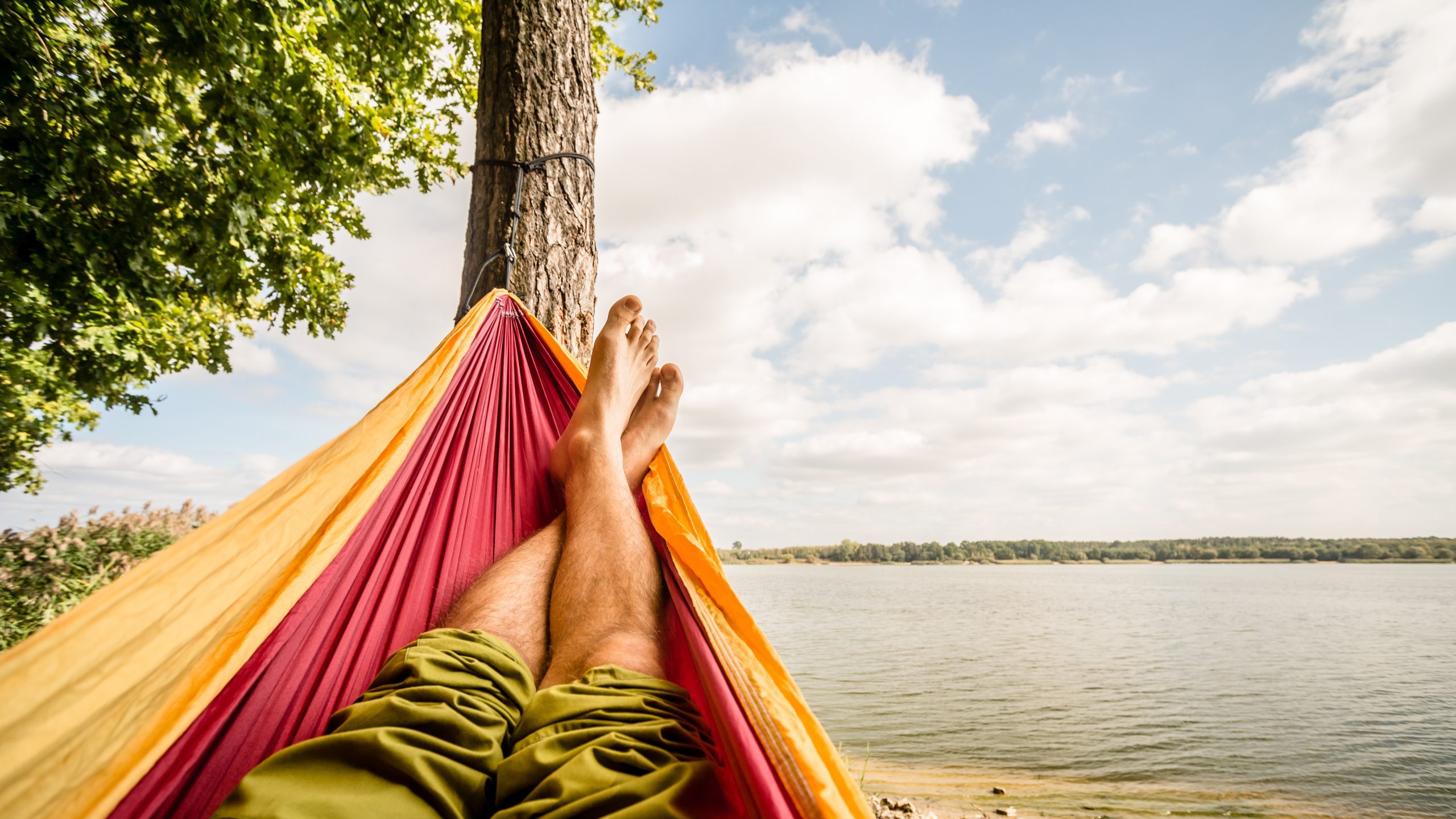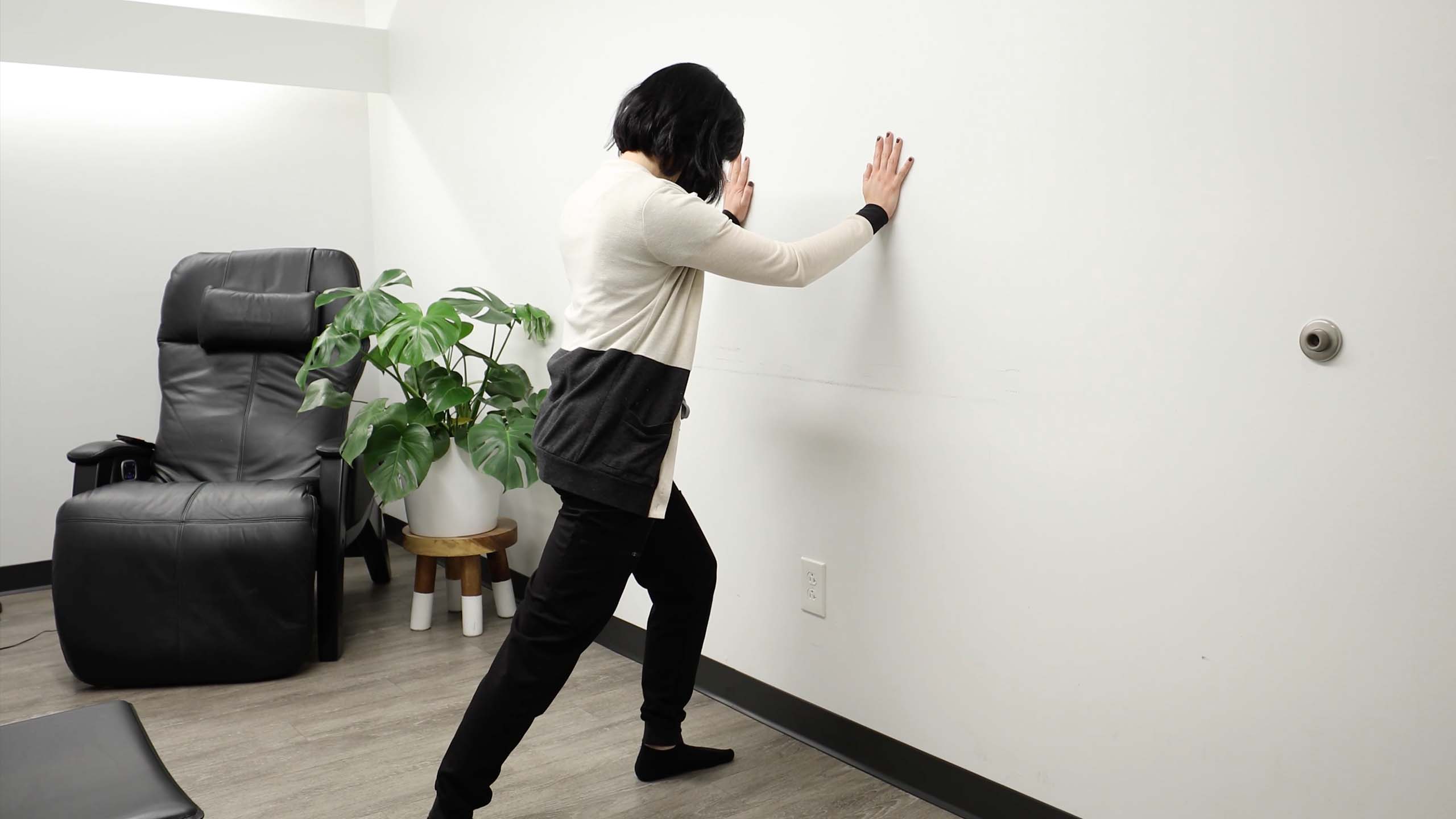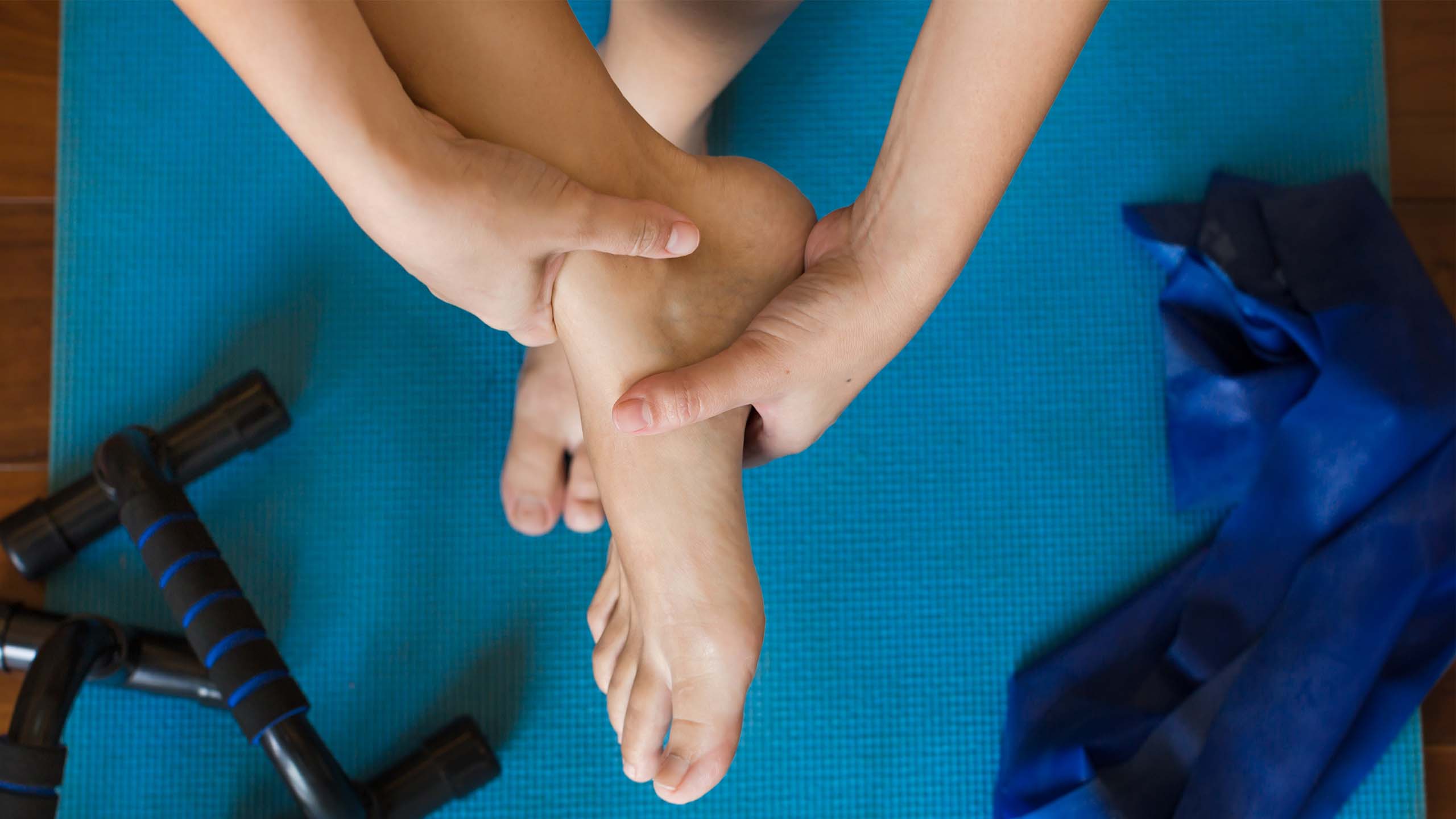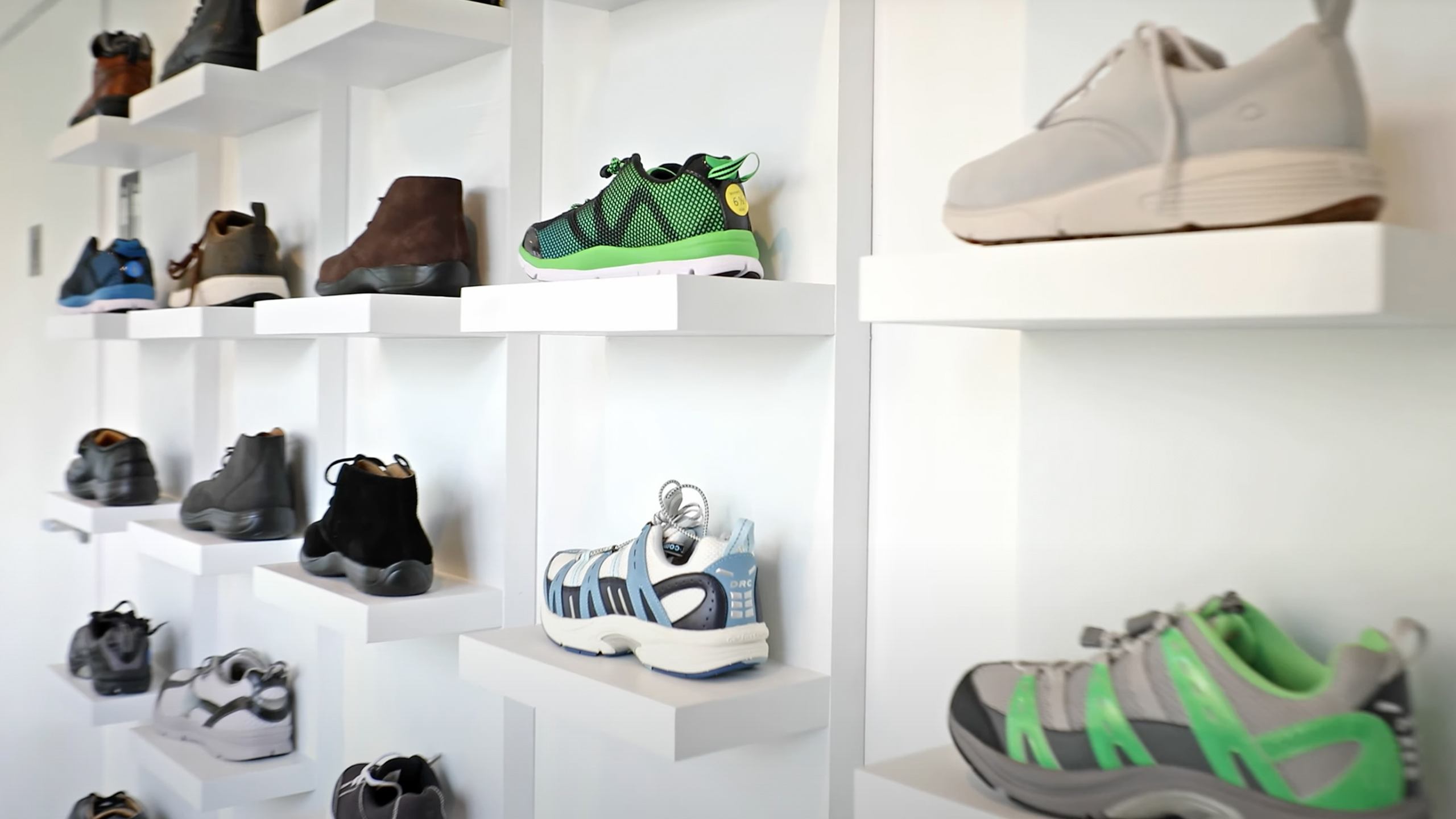Wellness and Proactive Care
Wellness and Proactive Care
Here’s how you can keep your feet and ankles healthy – without visiting the doctor
It’s reassuring to know that modern, advanced health care offers plenty of effective tools to correct common ailments and get us back on our feet. And while breaks, sprains, bruises, cuts, and more can result in a doctor’s visit, there are a number of things you can do on your own to keep your feet and ankles happy and out of the doctor’s office.
Proactive podiatry care focuses on the ways that you can support your lower extremities to prevent serious injuries and ailments. Here are some preventative care recommendations from the experts at Balance Foot & Ankle:
- Invest in quality, proper-fitting shoes: If there’s one aspect of your wardrobe to not go cheap on, it’s the shoes on your feet. Taking the time to find a quality shoe that not only fits you properly, but meets the needs of your lifestyle, is a critical step to prevent foot and ankle pain. Avoid the big stores and seek out a local shoe retailer that will take the time to look at your feet size, analyze your foot strike, and consider your footwear needs to help you find a pair that’s right for you. Balance also offers custom-fitted orthotics in partnership with Earthwalk Orthotics, a conservative intervention that can add additional comfort and support to your shoes
- Warmup before exercise: Whether it’s chasing your kids around the backyard, going for a run, or meeting your friends for a game of pickup basketball, it’s important to always make the time to warm up before jumping into action. The idea of a warm up is to gradually “fire up” the muscles you’ll be utilizing for a particular activity, and it can be as simple as progressing from a slow walk for a few minutes to a faster pace before a run.
- Strengthen your ankles at home: No gym or special equipment is required to build and maintain strong feet and ankles. By getting the habit of routinely strengthening and mobilizing your ankles, you can stay ahead of common injuries and ailments. Check out our article that walks you through several simple, at-home exercises
- Enlist the R.I.C.E. method: No matter how careful you are, accidents still happen. It could be a twisted ankle while hiking on an uneven trail or dropping a heavy object on your foot that can leave you with notable pain and discomfort. Short of a serious injury, you can likely recover fully on your own within a matter of days or weeks by following the time-tested “R.I.C.E.” method, which stands for rest, ice, compression, and elevation.
Following these steps diligently will go a long way in keeping your feet happy and out of the doctor’s office. But there are still instances when injuries are serious and can’t be treated at home. If you’ve tried the above strategies and are still held back by pain or discomfort, it might be time to speak with a medical professional. Here’s a guide to helping you decide if it’s time to schedule a visit with Balance Foot & Ankle.
Let us restore your balance.
If you notice the discomfort in your heels persisting, our trusted team of podiatrists at Balance Foot & Ankle can work with you to alleviate the pain by customizing a treatment plan to your lifestyle.
Foot and ankle surgery: advice for before and after your procedure
Foot and ankle surgery: advice for before and after your procedure
From bunions and hammertoes to achilles ruptures, arthritic joints, and broken bones, there are many foot and ankle conditions and ailments that might require surgery in order to make a full recovery. There’s no doubt that surgery is a major milestone on your journey to recovery. However, many patients overlook the importance of the days and weeks leading up to and following a surgical procedure when, in fact, these are critical periods in the recovery process.
Here are some general tips and best practices to keep in mind ahead of a scheduled surgery. For specific recommendations, be sure to work with your medical provider to identify the best ways to promote a successful recovery.
Preparing for your surgery
- Understand the procedure: to avoid any surprises during the day of the operation, be sure to ask your surgery team plenty of questions about the procedure, including how long it will take, how much pain to expect post operatively, and if any medications you’re currently taking will interfere with the procedure.
- Keep good hygiene: it’s always a good idea to stay clean, but it’s extra important to thoroughly clean your feet and ankles leading up the procedure to prevent any infections. This should involve twice daily scrubbing, including under your toenails.
- Dial in your diet and hydration: you want to feel your best going into the procedure, so sticking to healthy foods – including fruits, vegetables, lean meats and whole grains – while drinking plenty of water and limiting alcohol is important in the days and weeks before your surgery.
Recovering from your surgery
- Rearrange your home: while this might not be possible for everyone, it’s recommended that you rearrange your living space so that everything you need is on one floor, eliminating or reducing the need to use stairs. When this isn’t feasible, coordinate with friends and family who can stop by to help with meals and other household chores.
- Stay clean: just like in the lead up to surgery, you want to reduce the risk of infection following your procedure. Make sure you’re keeping the affected area bandaged and the skin surrounding it clean. This might require a shower cast cover that allows you to clean around the area where you had surgery.
- Manage pain with RICE: post operative pain can be expected and may continue for days or weeks following surgery. Adhering to the best practices of Resting, Icing, Compressing, and Elevating the affected area will be essential to making a full recovery. RICE helps with managing pain and inflammation during the recovery period. Always make sure to take your pain medication as prescribed by your surgeon.
Every surgery is different and each patient faces unique circumstances on the road to recovery. As always, consult your doctor and surgery team for specific recommendations that apply to your situation. Follow your doctor’s instructions diligently and understand that recovering from a surgery is often a gradual process.
If you have any specific questions or are in need of an appointment, get in touch with our team of experts today.
Let us restore your balance.
If you notice the discomfort in your heels persisting, our trusted team of podiatrists at Balance Foot & Ankle can work with you to alleviate the pain by customizing a treatment plan to your lifestyle.
Video: Ask a Podiatrist with Dr. Charles Hastings
Ask a Podiatrist with Dr. Hastings
Ever wondered about the things people ask Podiatrists on the Internet? Join Balance Foot & Ankle specialist, Dr. Charles Hastings DPM, FACFAS, FFPM RCPS (Glasg) on an expedition to answer the Internet’s burning questions about all things foot and ankle health!
Let us restore your balance.
If you notice the discomfort in your heels persisting, our trusted team of podiatrists at Balance Foot & Ankle can work with you to alleviate the pain by customizing a treatment plan to your lifestyle.
Stabilize Your Step: Yoga for Foot & Ankle Strength
Stabilize Your Step: Yoga for Foot & Ankle Strength
Yoga is a practice that has been used for centuries to improve flexibility, mental clarity, and overall awareness of the body. In the field of podiatry, we often recommend yoga stretches to help improve the strength and stability of our feet and ankles. Our feet are the foundation of our body, support our weight throughout the day, and provide balance and stability. However, due to inactivity, improper footwear, or injuries, our feet and ankles may become weak, leading to pain, discomfort, and instability.
We’ve outlined a few simple poses you can practice to enhance your stability, and hopefully, help you relax and restore.
The Balanced Solution
Mountain Pose
Mountain pose is excellent for improving posture and grounding the body. It helps to strengthen the feet, ankles, and legs while improving balance and stability:
- Stand straight with your feet hip-width apart
- Keep your weight evenly distributed on both feet
- Engage your leg muscles and lift your kneecaps
- Lengthen your spine and keep your shoulders relaxed
- Hold for 30 seconds to one minute
Warrior III
Warrior III is a powerful pose that strengthens the legs, hips, and ankles:
- Stand straight with your feet hip-width apart
- Shift your weight to your left foot and lift your right leg off the ground
- Extend your right leg behind you while keeping your hips square
- Reach your arms forward and keep them parallel to the ground
- Hold for 30 seconds to one minute and repeat on the other side
Tree Pose
Tree pose is an excellent pose for improving stability. It strengthens the feet, ankles, and legs while improving focus and concentration:
- Stand straight with your feet hip-width apart
- Place your right foot on your left inner thigh
- Press your foot into your thigh and your thigh into your foot
- Bring your hands to your heart center or raise them above your head
- Hold for 30 seconds to one minute and repeat on the other side
Half Moon Pose
Half Moon pose is a pose that helps to stretch the vertebral column while engaging the ankles and legs:
- Stand straight with your feet hip-width apart
- Shift your weight to your left foot and place your left hand on the ground
- Lift your right leg off the ground and extend it behind you
- Rotate your right hip open and stack your right foot on top of your left foot
- Raise your right arm toward the sky
- Hold for 30 seconds to one minute and repeat on the other side
Downward-Facing Dog
Downward-facing dog is a pose that strengthens the feet, ankles, and wrists while improving flexibility and balance:
- Start on your hands and knees with your hands shoulder-width apart and your knees hip-width apart
- Lift your hips up and back, straightening your arms and legs
- Press your hands and feet into the ground
- Hold for 30 seconds to one minute
Practicing and incorporating these poses into your regular exercise routine can help prevent injuries, alleviate pain and discomfort, and enhance overall well-being. Remember to practice these poses mindfully and with compassion, listening to your body’s limitations and adjusting accordingly. If you need extra help restoring your balance or stabilizing your step, we’re here for you. Don’t hesitate to give us a call or schedule an appointment today at any of our five locations.
Ankle Care Tips for the Fall Sports Season
Ankle Care Tips for the Fall Sports Season
One of the best parts of this time of year for many students is the return of fall sports. Whether it’s playing football under the Friday night lights, racing on the cross-country course, or taking the field for a soccer match, there’s no shortage of opportunities for competition, self-improvement, and team bonding.
Student-athletes know as well as anyone how important staying healthy is for making the most of their participation in fall sports. In order to stay healthy and on the field this fall and beyond, let’s take a look at some of the best ways to keep your ankles strong.
Ankle sprains
Sprains are among the most common injury that sidelines student-athletes. A 2020 study found that ankle sprains account for up to 40 percent of all sports-related injuries and is the most frequent lower-limb injury.
An ankle sprain occurs when you land awkwardly or take contact to the ankle, causing a roll or twist that leads to a tear or stretch of the ankle-supporting ligaments (beyond its normal range of motion). Pain, tenderness, bruising, and a limited range of motion are the top symptoms associated with an ankle sprain.
When you fear a sprain has occurred, it’s important to stop playing to prevent a more serious injury. Self-care options that are recommended include rest, icing of the affected area, elevation of the affected area, or use of a compression wrap to reduce swelling. If treated early, athletes can often have a swift recovery without seeing a doctor.
Playing through the initial symptoms of a sprain will increase the chances it becomes a more serious injury that will require medical attention and a longer recovery period.
Staying on the field
We know that ankle injuries are prevalent among all athletes. So, what can we do to prevent them?
- Proper warm-up: Before participating in physical activity, whether it’s practice or a game, a thorough warm-up routine is critical. Spend at least 15 minutes doing light movement that gradually raises the heart rate. This could involve a progression of light jogging to faster running and plyometric exercises that prepare the entire body for more intense physical activity
- Appropriate footwear: Don’t overlook the importance of wearing the right pair of shoes. Make sure your shoes are well fitting, designed for the sport you’re playing, and replace them when they start to wear down
- Build strength and flexibility: This is a long-term commitment that will pay dividends. By regularly incorporating strength exercises that target the lower extremities, you’ll be a more resilient athlete and can better handle the wear and tear that comes with competition. Calf raises, resistance work with a band, and balance exercises are some simple ways to strengthen the feet and ankles.
Injuries happen to the best of us. Even athletes who take all the right precautions aren’t totally immune from being sidelined. If you’re dealing with an issue right now, our team is here to get you back in the game. Reach out today or schedule an appointment with us!
Summer Foot Care on Vacation
Summer Foot Care on Vacation
Summer is just around the corner, and that might mean you’re getting ready for your next vacation to the beach or another bucket-list destination. Many vacationers neglect to properly take care of their feet. Don’t let pain and discomfort get in the way of enjoying your sunny vacation.
Here is a list of tips for keeping your feet happy when traveling:
- Choose the right shoes and bring multiple pairs
When planning your vacation, understand the types of activities you’ll be doing. Will you be walking a lot? What kind of terrain will you be on? Consider these questions as you pack. It’s also important to have multiple pairs to rotate. You may be trying to pack lightly, but having a second or third pair on hand will ensure you always have a fresh pair ready to go.
- Keep blisters away
Everyone knows the feeling of an emerging “hot spot” on our feet when we don’t have proper socks or footwear on. Don’t let something preventable like a blister ruin your trip. On top of wearing clean and quality socks and shoes, consider using a blister prevention cream or tape before spending long periods of time on your feet. There are many affordable and effective travel-size products available, such as Body Glide or RockTape.
- Don’t forget sunscreen
In addition to preventing blisters from chafing, sunburn can be another source of serious discomfort. If you’re wearing sandals or open-toed shoes when the sun is out, be sure to apply sunscreen to the exposed parts of your feet and toes. It’s easy to forget to apply protection to these areas, yet your feet are one of the more vulnerable places for sunburn when exposed.
- Keep the blood flowing
If you have a long plane ride or drive to your destination, compression socks are one good way to promote good blood flow while being sedentary. Your feet and lower legs will thank you if you break up long periods of sitting with short walks, which is another way to keep a healthy blood flow and prevent discomfort. It’s also recommended to avoid crossing your legs while sitting.
The importance of happy feet can be overlooked when planning for your summer vacation. You deserve a fun and relaxing vacation, so be sure to take these easy steps to prevent pain and discomfort while traveling. If you return home from vacation with skin or nail issues around your feet, learn more about how our team of professionals can get you the relief you need.
Video: Stretches to Prevent Common Running Injuries
Video: Stretches to Prevent Common Running Injuries
Although running is a great way to stay active, many runners will deal with an injury at some point. The repetitive impact of this type of exercise can take a toll on your body, which can result in various injuries.
Let us restore your balance.
Thankfully, Balance Foot & Ankle’s Dr. Hunstman is here to give you some insight into common running injuries and how you can prevent them. In the case that professional intervention is required, our trusted team of podiatrists can help get you back on your feet with a personalized treatment plan that emphasizes a holistic approach to total wellbeing.
Four Ankle Strengthening Movements You Can Do at Home
Four Ankle Strengthening Movements You Can Do at Home
It’s no secret that our ankles play an essential role in every step we take, our ability to stay upright, and in performing almost every other physical function on a daily basis. Unfortunately, many people have weak ankles, which can often lead to injuries and chronic pain. Age, weight, footwear, overuse, trauma, and other conditions cause ankle problems. The good news is that we can take control of the health of our ankles by working to make them stronger.
Here is a list of simple, at-home exercises that will lead to healthy and strong ankles.
Movements to Strengthen Your Ankles
Before doing any exercises, make sure to warm up with a low-intensity activity such as walking or riding a stationary bike for a few minutes.
- Improve balance: Standing upright, slightly lift your left leg off the ground, shifting weight-bearing to your right leg. Hold for a few seconds and then switch legs. As you
improve, increase the amount of time you balance on each leg. - Increase range of motion: while seated, use your foot to write out the letters of the alphabet, leading with the big toe. Keep the movements small so that you are just
moving your foot and ankle and perform with each foot. - Build strength: place 20 marbles (or another small item) on the floor in front of you while seated. Use your toes to pick up and place one marble at a time into a bowl. Repeat with the other foot. A
similar exercise can be performed with a towel. Placing it in front of your feet while seated, grab the center of the towel with your toes and scrunch it towards you. Repeat
with the other foot. - Step it up a level: once you’re comfortable with the above exercises, you may be ready to progress to doing calf raises. This can be performed by standing on both legs, using a wall or chair for balance, and slowly raising one heel off the ground, then lowering it. Repeat on each leg ten times.
As always, we’re here for you. If your ankle issues persist or worsen, don’t hesitate to schedule an appointment with us today so that we can ensure you’re on the path to healthy feet and ankles.
Ingrown Toenails: How to Avoid Them and How to Treat Them
Ingrown Toenails: How to Avoid Them and How to Treat Them
One of the most common calls we receive at Balance Foot & Ankle has to do with an issue that can be minimized by slightly modifying the way you maintain your feet. That issue is the development of ingrown toenails. Today we’ll discuss self-care for ingrown toenails, how to spot them and when it’s time to see your doctor.
Ingrown Toenails: How Can I Avoid Them?
Practicing proper self-care for your toenails can prevent ingrown toenails and infections:
- Avoid trimming the nails too short
- Trim nails straight across rather than at an angle
- Utilize sanitary and sharp clippers and tools
- Wear shoes that fit properly
I Think I Have an Ingrown Toenail: Now What?
If you are experiencing the following symptoms you may be developing an ingrown toenail:
- Pain
- Swelling
- Redness
- A change in your skin pigmentation along the nail border
If you notice any of these changes, the most important first step is to avoid the temptation to remove the ingrown toenail on your own. This will help you to mitigate a worsening of symptoms or an infection. Instead, try soaking your feet in a warm Epsom salt soak for 15-20 minutes twice per day, applying a topical antibiotic ointment (covered by a Band-Aid), and be sure to call your doctor to schedule an appointment if necessary.
When Should I See a Doctor?
There may also be signs of pus, warmth or red streaking along the toe which may indicate an infection. Should home care fail to alleviate the symptoms or should symptoms worsen, you should schedule an appointment to be seen in the office at which time your doctor will assist in alleviating the symptoms, managing the infection and will discuss an in-office procedure if necessary.
As always, we are here to be sure you are well cared for!
Finding and Buying Shoes That Fit Properly
Finding and Buying Shoes That Fit Properly
The tell-tale signs of autumn are all around us. School bells ring once again, football games are kicking off, and just about everything comes in pumpkin spice!
As the air turns crisp, and the leaves transform into a prism of color – our wardrobes begin to change in tandem. As that favorite cozy sweater takes the place of breezy summer linens, now is the time to swap out sandals and barefoot behavior for comfortable and smart footwear choices that will have your feet feeling
supported.
After a long summer of meticulously pedicured toes in often unsupportive shoe gear, now is the time of year to give those feet much-needed support [and warmth] in boots, sneakers, clogs, etc.
Let’s talk about shoe shopping.
As I often share with my patients, there are several things to consider that go beyond the aesthetic appearance of a shoe when shopping. Whether you are shopping for shoes to get you around campus, for the office, or for weekends with friends – these tips will help keep your feet balanced.
Before you head to the shoe store, stand on a blank piece of paper and trace each foot as accurately as possible. Then take this tracing with you when shopping for shoes. Place your desired shoe on the tracing. Does the shoe cover your tracing or do you see the outline of your foot extending beyond the margins of the shoe? This can be a simple and fun way to keep yourself honest when making shoe selections. Choosing a shoe that is too narrow for your actual foot shape could set you up for future issues such as pain, calluses, blisters, ingrown toenails, and the progression of some deformities, such as bunions and hammertoes.
Next, find a reputable shoe store that can assist you in the correct shoe size, shape, and type to fit not only your feet but also your lifestyle. They will measure your feet to ensure that you are indeed selecting the correct size.
Consider shoe shopping later in the day when your feet may be a bit larger from swelling, as this is natural after a day on your feet and walking about. This will give you a better idea of the shoe size and shape that is best for you.
The last tip is to try to be reasonable and as practical as possible. Boots with a narrow toe box and narrow 4-inch heel may look beautiful, but in turn, may haunt you later down the road. Reserve those beauties for occasional outings when you know you will be sitting all night long. Go practical and comfortable for everyday wear, exercise, and casual events.
Believe me, your feet will thank you!

